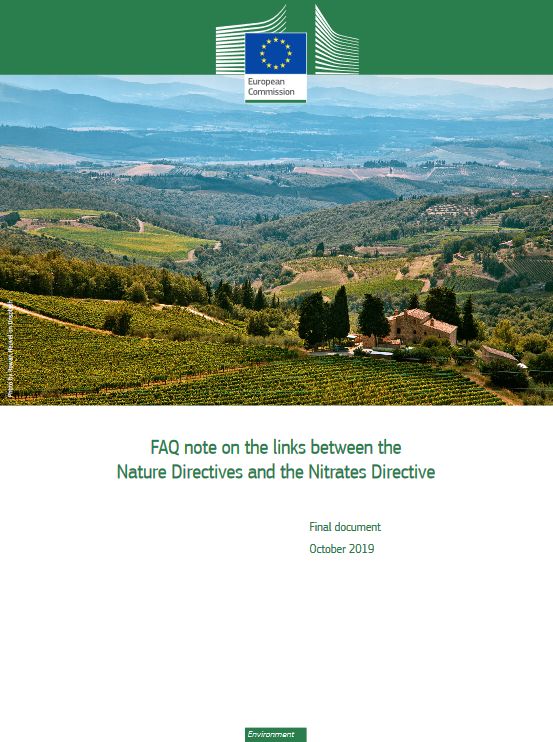Action Plan to Maintain and Restore to Favourable Conservation Status the Habitat Type 4030 European Dry Heaths
EU Habitat Action Plan
- Publikation
- Zitiervorschlag
Olmeda C., Šefferová V., Underwood E., Millan L., Gil T. and Naumann S. (compilers). 2020. EU Action plan to maintain and restore to favourable conservation status the habitat type 4030 European dry heaths. European Commission.
- Sprache
-
Englisch
- Autorenschaft
-
Sandra Naumann(The N2K Group / ATECMA)(The N2K Group / Daphne Institute of Applied Ecology)(Institute of European Environmental Policy)(The N2K Group / ATECMA)(The N2K Group / ATECMA)
- Credits
Mitwirkende: Alena Vydrova (Nature Conservation Agency, Czech Republic); Anamaria Roman (Institute of Biological Research Cluj-NIRDBS, Romania; Axel Ssymak (Federal Agency for Nature Conservation, Germany); Bruno E.L. Cerabolini (University of Insubria, Italy); Caitriona Douglas (National Parks and Wildlife Service, Ireland); Douglas Evans (EEA ETC Biodiversity); Fernando Ojeda (Cadiz University, Spain), Geert De Blust (University of Antwerp, Belgium); Geert Sterckx (Agency for Nature and Forest, Belgium): Gergely Király (University of Sopron, Hungary); Götz Ellwanger (Federal Agency for Nature Conservation, Germany); Graham Sullivan (Scottish Natural Heritage, UK); Isabel Alonso (Natural England, UK), Ján Šeffer (Daphne Institute of Applied Ecology, Slovakia), Joost Dewyspelaere (Natuurpunt, Belgium); Jørgen Lissner (Danish Environmental Protection Agency); Leonor Calvo (León University, Spain); Martin Willing (Conchological Society of Great Britain and Wales), Mihail Mihailov (Ministry of Environment, Bulgaria); Mike Edwards (Bees, Wasps and Ants Recording Society, UK); Mike Smedley (Scottish Natural Heritage), Pawel Pawlaczyk (Klub Przyrodnikow, Poland); Philip Perrin (Botanical, Environmental and Conservation Consultants, Ireland), Philippe Frankard (Nature and Forest Department, Belgium).
- Finanzierung
-
Europäische Kommission, Generaldirektion Umwelt (GD Umwelt), International - Verlag
-
Europäische Kommission, Generaldirektion Umwelt (GD Umwelt), International - Jahr
- Umfang
- 116 S.
- Projekt
- Projekt-ID
- Inhaltsverzeichnis
-
Gesamtes Inhaltsverzeichnis
SUMMARY
FRAMEWORK FOR ACTION
1. INTRODUCTION
1.1 Action plan geographical scope
2. DEFINITION, ECOLOGICAL CHARACTERIZATION AND DISTRIBUTION
2.1 Habitat definition
2.1.1 Habitat definition according to the Interpretation Manual of European Union Habitats
2.1.2 Habitat definition according to the EUNIS habitat classification
2.1.3 Habitat definition based on the European checklist of vegetation
2.1.4 Habitat description from the Red list of European habitats
2.2 Differences across countries and regions. Interpretation problems
2.3 Ecological requirements and management needs
2.3.1 Lowland, upland and coastal dry heaths
2.4 Related habitats
2.5 Related species
2.5.1 Plants
2.5.2 Birds
2.5.3 Amphibians and Reptiles
2.5.4 Invertebrates
2.5.5 Mammals
2.6 Ecosystem services and benefits
2.7 Geographic distribution
3. CONSERVATION STATUS, THREATS AND PRESSURES
3.1 Conservation status and trends
3.2 Conservation status of the habitat in Natura 2000 sites
3.3 Methodologies for conservation status assessment
3.3.1 Favourable Reference Values
3.4 Threats and pressures
3.4.1 Identification of main threats and pressures for the habitat
3.4.2 Abandonment of traditional grazing and unsuitable grazing by livestock
3.4.3 Eutrophication and nitrogen deposition
3.5 Climate change effects
3.6 Conclusions and Recommendations
4. HABITAT CONSERVATION AND MANAGEMENT OBJECTIVES
4.1 General framework and context
4.2 Overall objective of this action plan
4.3 Setting objectives at biogeographical and country level
4.4 Setting objectives at the national level
4.5 Setting conservation objectives in Natura 2000 sites
4.6 Setting objectives outside Natura 2000 sites
4.7 Determining objectives and management approaches in a particular area
5. CONSERVATION AND RESTORATION MEASURES
5.1 Key management practices for maintenance of the habitat in good condition
5.1.1 Grazing
5.1.2 Cutting
5.1.3 Burning
5.1.4 Management of Nitrogen deposition impacts
5.2 Heathland restoration and defragmentation
5.3 Conservation management and restoration for wildlife
5.4 Planning for conservation management in a specific area
5.5 Criteria to prioritise measures and to identify priority areas for action
5.6 Main stakeholders to define and implement the measures
5.7 Challenges, difficulties and possible solutions
5.8 Conclusions and recommendations
6. COSTS, FUNDING AND SUPPORTING TOOLS
6.1 Cost of conservation measures
6.1.1 Cost assessment
6.2 Potential sources of financing
6.2.1 Common Agricultural Policy funding
6.2.2 LIFE projects
6.2.3 Structural Funds
6.2.4 Other approaches and supporting tools
6.3 Main funding gaps and difficulties
6.4 Conclusions and recommendations
7. MONITORING
7.1 Habitat monitoring methods
7.2 Monitoring effectiveness of the action plan and conservation measures
7.3 Review of the action plan
8. REFERENCES
ANNEX
1. Habitat type definition and interpretation problems
1.1 Definition across countries
1.2 Interpretation problems
2. Methodologies for conservation status assessment in some Member States - Schlüsselwörter
-
Vogelschutz- und Habitatrichtlinien, Naturschutzrichtlinien, Nitratrichtlinie, Verordnung der invasiven gebietsfremden Arten, Naturaktionsplan, EU28, Natura 2000, Governance, Habitat-AktionspläneDeutschland, Slowenien, Litauen, Europa

